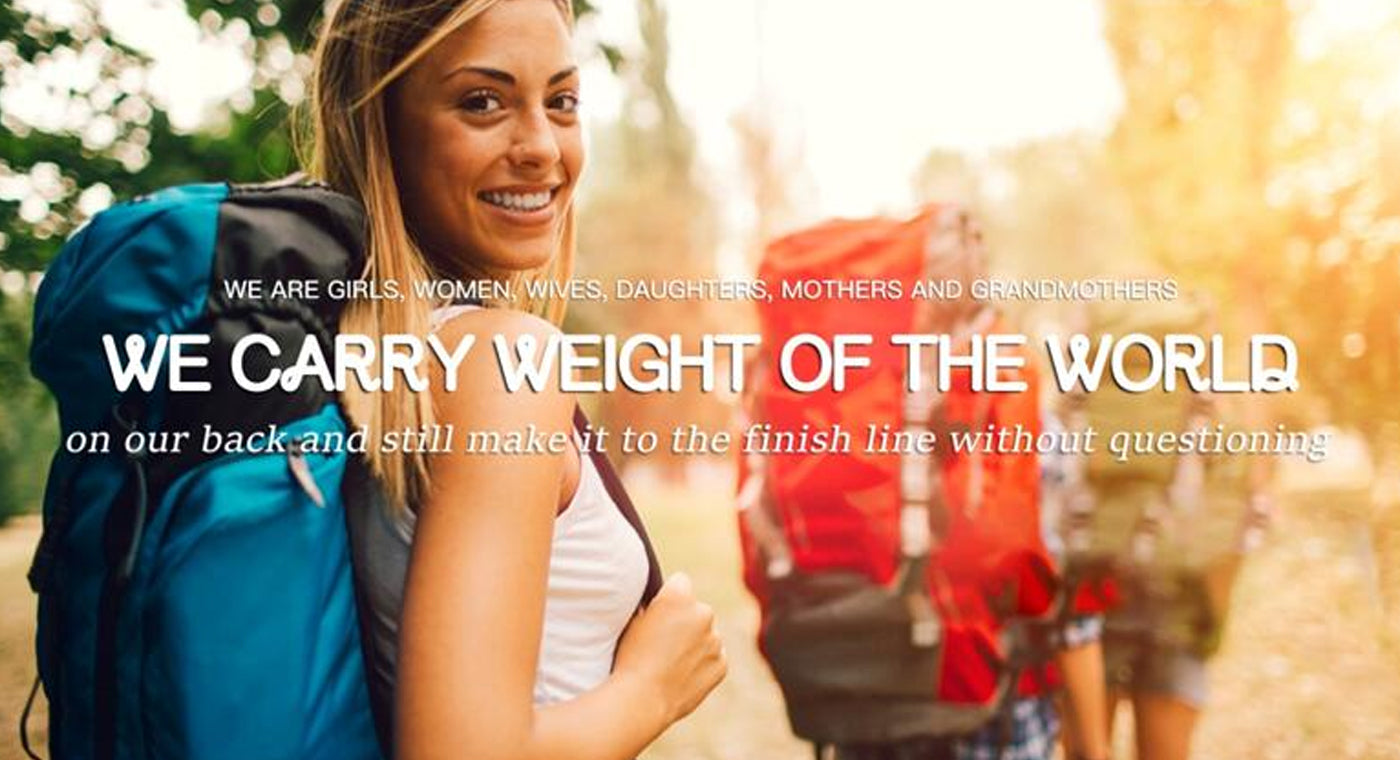Women can have skills and knowledge that allow them to enjoy outdoor life with support.
“The warrior woman is fully awakened and is taking a stand, taking the problems by the horns with her own hands and will conquer all that is there and all who comes as they dare.”

We aren’t used to seeing women camping alone, backpacking alone. But actually, 26 percent of millennial women have traveled by themselves, and more and more women want to experience their first solo camping.
Solo camping is rewarding for women in so many ways. Set up the tent, cut firewood bonfire, taste dinner finished by self, turn off the lamp and fall asleep in the tent alone, open the zippers in the morning and smell the fresh dew-filled air...All these experience brings woman a sense of accomplishment, adventure and strengthens our self-confidence. It was very cool.
Still, while it’s a reality that women of all ages face certain vulnerabilities on the road. We need to prepare ourselves with the knowledge and skills to stay safe and comfortable when camping solo.
What You Need to Take for Your First Solo Camping Trip:
1. TENT
The tent is almost the most important one in all the camping gears, especially for a solo camping trip. It is your shelter that can keep you comfortable, clean, and warm and secure even in the windy or rainy weather. So you should find a perfect one that has multi-features, with windproof and waterproof function, the usage seems easy, comfort enough, and lightweight( because you will carry it all the way)!

2. SLEEPING PAD
The tent is your house and the camping mat is your bed. The sleeping pad is also a very important camping gear that can make you have a sweet sleep after a tiring hiking day.

There is no one to share the burden, so remember ultra-light, ultra-light, and ultra-light. For a sleeping pad, ultra-light means the weight of the sleeping pad should under 18oz (500g), while everything between that and 1kg (36oz) can still be considered lightweight.
R-value is another important indicator that should be examined carefully. It’s the unit of measure of a sleeping pad’s ability to insulate. The higher the R-value, the warmer it will be.
You can use two pads at the same time to keep your body warm at night, as Women's body temperature is lower than men's in most cases.
3. SLEEPING BAG
With a good sleeping bag, you can get a sweet sleep after a whole day of hiking or any other exploring sports in nature.

Here we collect some suggestions from experienced campers about how to choose a good sleeping bag.
Temperature rating: When choosing a sleeping bag, please do look at the temperature rating, which indicates the temperature at which the sleeping bag is suitable for use.
Shape & size: Sleeping bags come in these basic shapes: Rectangular, Mummy: Semi rectangular, Double bags, how to choose? It’s a good idea to “try on” different bags to find which bag styles are most comfortable for you.
Insulation material: You can determine which material to choose after thinking about what you plan to use the sleeping bag for.
A goose down insulated sleeping bag can provide less weight and bulk provided. can be used in a long time serious backpacking. If you prefer a car camping with Occasional Backpacking, you can choose more “normal” goose down sleeping bags or a high-quality synthetic sleeping bag.
4. BACKPACKER
A 15-35 L backpack is enough for a short-time or one-day hiking trip;2-4 days camping trip needs a 35-50 L backpack, long-term camping need a backpack with a capacity of more than 70 L.

The weight of the whole gear (the backpack and all the gear) should within 20% of the person's weight. Beyond this percent, we will feel uncomfortable, and difficult to have a long time hiking.
5. COOKING & DINING
Carrying lightweight, professional cookware, dishes & utensils to cook delicious meals by yourself. Ensured you can get enough energy even in wildness.
6. CLOTHES
- Moisture-wicking underwear
- Moisture-wicking T-shirts
- Quick-drying pants/shorts
- Long-sleeve shirts
- Lightweight fleece or jacket
- Boots or shoes suited to the terrain
- Socks
- Rainwear
- Long underwear
- Warm insulated jacket or vest
- Fleece pants
- Gloves or mittens
- Warm hat
- Swimsuits
- Water sandals
- In-camp sandals or booties
- Bandanas
7. SOME ACCESSORIES
Some necessary accessories: headlamp, trekking pole, lanterns, knives, water bottles, and safety & survival tools.
8. MEDICAMENT
- Mini emergency kit
- Painkillers
- Personal medication
- Sanitary products
I wish you have a great camping solo trip with our tips.


Share:
Everything You Need For The Perfect Road Trip
Top Camping Spots For Women In The USA